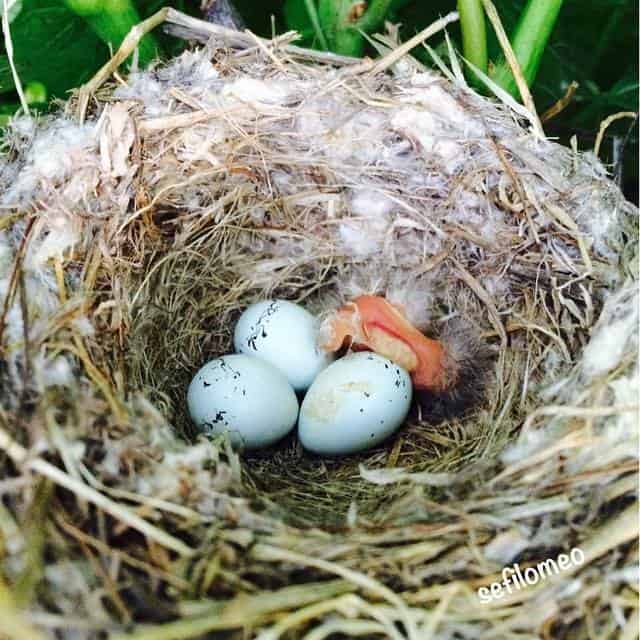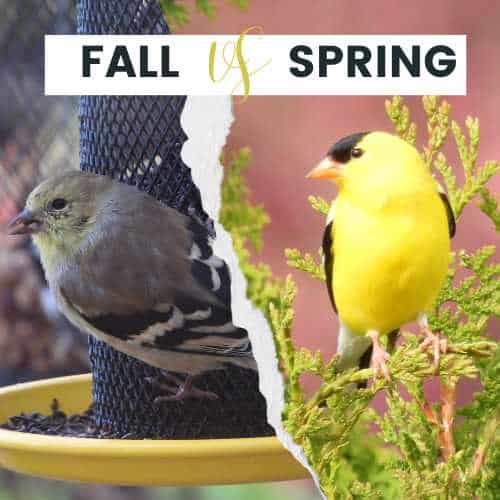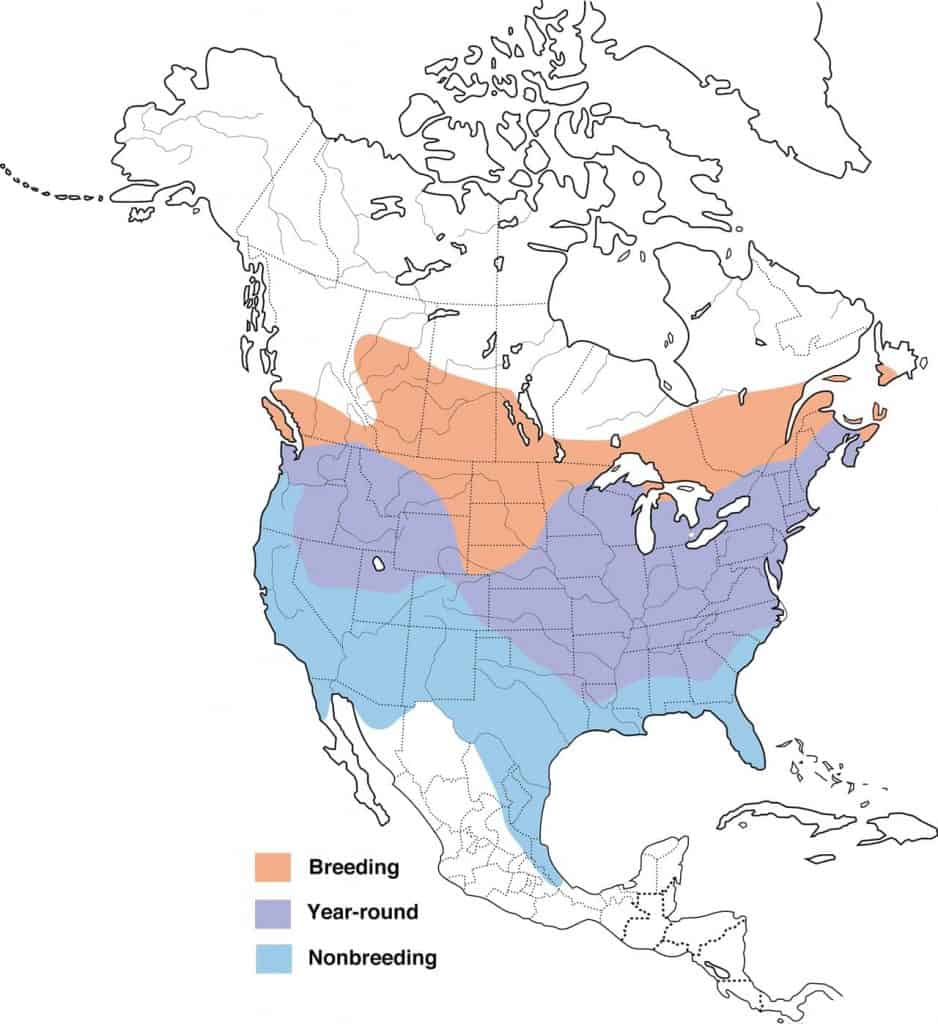Discover key insights about goldfinch in fall, from their unique late nesting habits and color changes to migration patterns and feeding guidelines.
If you enjoy watching American goldfinches in your backyard, you may have seen their color and behavior change from summer to fall. Known for their bright yellow feathers, goldfinches undergo some beautiful changes during autumn. From their interesting molt patterns to their flexible migration habits, there’s a lot to discover about these birds.
What you can expect to take from this article:
Key Takeaways
- Goldfinches have unique late nesting habits, primarily due to the availability of specific nesting materials and seeds for their young.
- Male goldfinches undergo a notable color change twice a year, shifting from bright yellow to olive green as they prepare for fall.
- During fall, it’s beneficial to keep feeding goldfinches until natural seed sources like thistles are abundant, especially as they often forage in flocks during this season.
- Not all goldfinches migrate, and their migration patterns are influenced by a variety of factors including food availability and weather conditions.
Goldfinches in Fall: Late Nesting Habits

When it comes to American goldfinches’ nesting habits, these little finches like to take their time. While most birds are wrapping up their nesting duties, goldfinches are just getting started. These birds don’t even consider breeding until late June, reaching peak nesting activity around late July and early August.
But goldfinches aren’t doing this because they’re procrastinators, they have a good reason: making the most of what nature offers.
The delay ensures that their favorite nesting materials, like fluffy thistle and milkweed down, are abundant.
It’s also fascinating how they build their nests. These aren’t your typical quickly assembled bird homes; goldfinch nests are well-thought-out and strong. A female goldfinch will carefully weave plant fibers and twigs into a tight cup, often using spider silk as a binding agent. The result is a nest so tightly knit it could hold water.
These nests are often hidden in shrubs or trees, blending seamlessly into their surroundings, yet placed in a way that they’re open from below. The height varies, ranging from a few centimeters off the ground to several feet up.
I couldn’t resist sharing this video of a baby goldfinch. So cute!
You’re more likely to spot a goldfinch nest in shrubby, open areas, rather than in dense, mature forests. And don’t be surprised if you find more than one nest nearby; goldfinches often nest in small colonies, likely a sign that the area is rich in resources.
You might think nesting later in the summer would lengthen their nesting period, but it doesn’t. It’s a short season for the goldfinches, lasting roughly between July and August. In years when there is plenty of food, they might go for a second brood, extending their nesting activities for nearly two months.
Goldfinches’ Molting
What time of year do goldfinches turn yellow?
So when do goldfinches turn that eye-catching yellow? Male goldfinches change colors twice a year. They start to swap their olive-green feathers for vibrant yellow ones in late winter. This transformation is a surefire sign that warmer days are on the way.
They rarely reuse the same nests. Instead, they build a new one each year, a strategy that lowers the risk of mite infestations and predator detection.
So if you’re eager to see them in their bright yellow feathers, late winter to early spring is your window.
Do yellow finches lose their color in the fall?
Yes, male goldfinches do lose their bright yellow color in the fall. They molt in late summer, switching back to a more muted olive-green hue. This color change helps them blend in better with their surroundings during the colder months.

If so many goldfinches shed all their feathers twice a year, why don’t we find the feathers on the ground?
Goldfinches go through a partial molt in the spring, where they only shed and replace their body feathers. This gives them their bright breeding appearance.
Come fall, they have a full molt, replacing not just their body feathers, but also their wing and tail feathers.
The reason we don’t often find these shed feathers scattered around is that the feather replacement process is gradual, and the tiny feathers blend into their surroundings. Not to mention, other animals might collect these feathers, or they may decompose, making them less noticeable on the ground.
Then, getting into late summer, they molt again, going back to their more subdued olive-green color for the fall.
Goldfinches’ Fall Diet
When should you stop feeding goldfinches?
Most birds don’t need your food assistance during the summer. That’s when they’re busy munching on insects and teaching their young how to forage for natural grub.
But unlike most birds that don’t require year-round feeding, goldfinches are an exception.
Goldfinches build their nests later in the year and they love seeds. Even though bird feeders are usually more important in the winter, goldfinches can use some extra seeds when they’re nesting late in the season.
Offering Nyjer seeds can be helpful for goldfinches. This doesn’t mean you should go overboard; young goldfinches do need to learn to find food naturally, after all.
Now, you might ask, what about winter? That’s when bird feeders are a big hit, especially when natural food is hard to come by. Keeping feeders full during challenging winter conditions is a good move.
So, if you’re wondering when to stop feeding goldfinches, consider maintaining a year-round schedule with some moderation during the summer. This way, you’ll provide that extra energy boost when it’s most needed, without making them too dependent on human aid.
Feeder behavior in the fall
Goldfinches display some neat behaviors around feeders in the fall. As natural food sources become scarcer, they’re more likely to visit your backyard offerings.
While they might be a bit more independent during the breeding season, in the fall, they’re social diners, often foraging in flocks. And if you’ve got small seeds in your feeder, expect regular goldfinch visits.
Goldfinches’ Migration
The migration patterns of American Goldfinches are as colorful and unpredictable as the birds themselves. Unlike some birds that stick to a strict migration schedule, goldfinches are more flexible.
While some might fly long distances in search of warmer climates or more abundant food, others might just move a short distance or even choose not to migrate at all.
So, why this variability? It mainly comes down to food availability and weather conditions.
In general, goldfinches from colder regions like Canada will head south for the winter, sometimes going as far as the southern U.S. or even northern Mexico.
On the other hand, those that live in milder climates might just stick around all year. Places like northern Virginia and southern Minnesota often have goldfinches year-round, thanks to more temperate winters and consistent food sources.
The color-coded map below accurately captures the varied movements of this little finch.

When they do migrate, goldfinches tend to move during the day, allowing them to feed as they go. Peak migration times are usually in mid-fall and early spring. Yet, some goldfinches have been known to stick around in the south even into early summer.
The exact timing and distance of their migration can vary widely, and routes can change based on past experiences and current conditions.
Conclusion
Goldfinches in fall have some special traits that make them stand out. They nest late, molt their feathers twice a year, and don’t always follow a set migration path.
These habits show how adaptable and smart they are. Knowing this can make your birdwatching more interesting and help you appreciate how resilient these birds are.
So, the next time you see a goldfinch, whether it’s bright yellow in spring or olive green in fall, remember there’s more to them than just their appearance.



